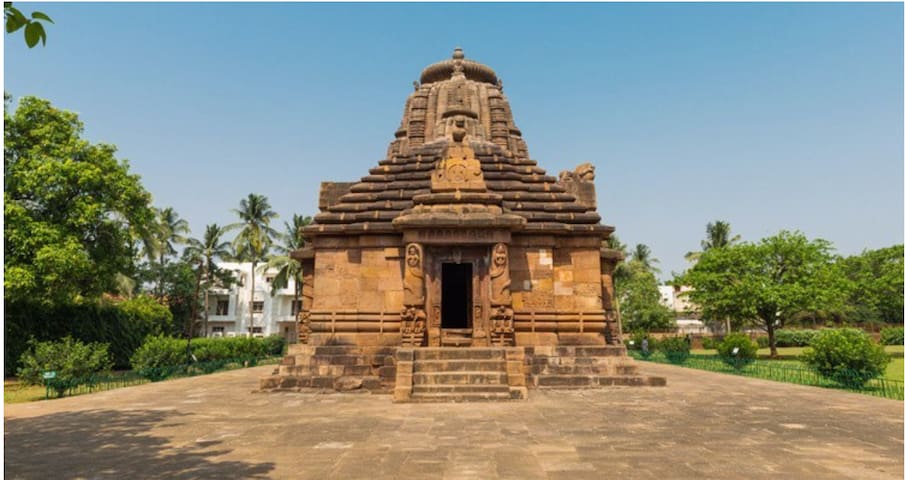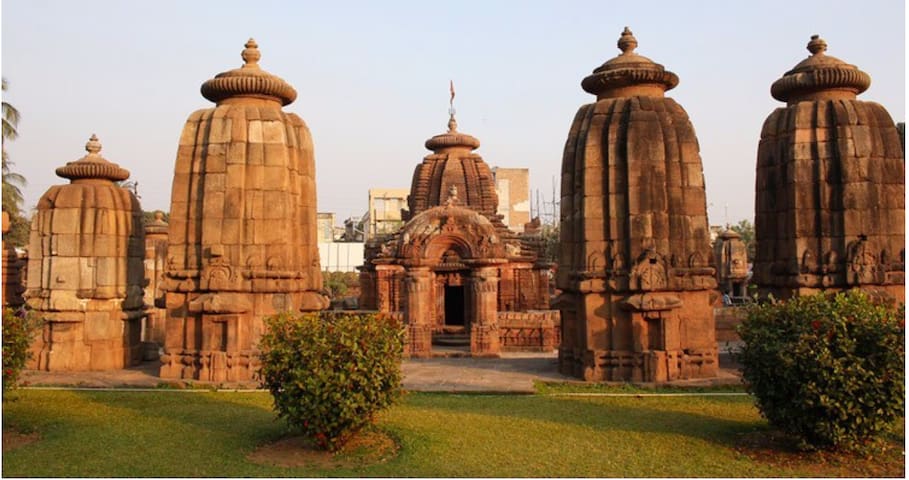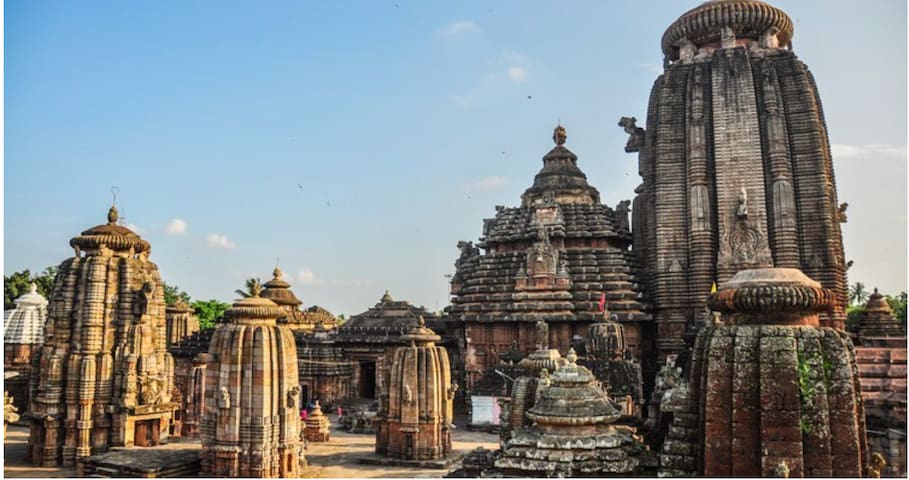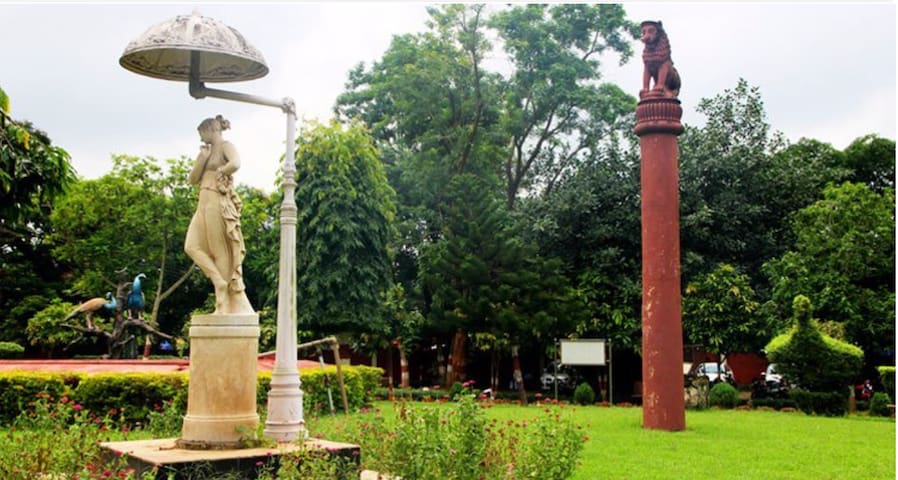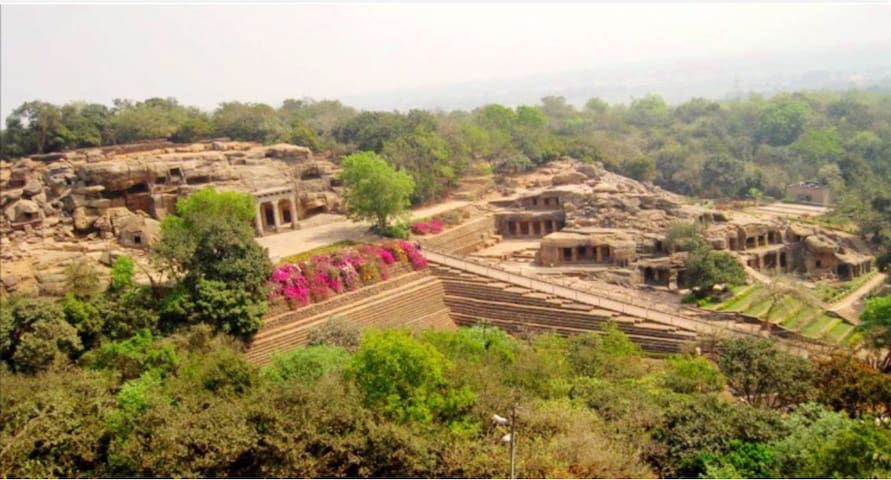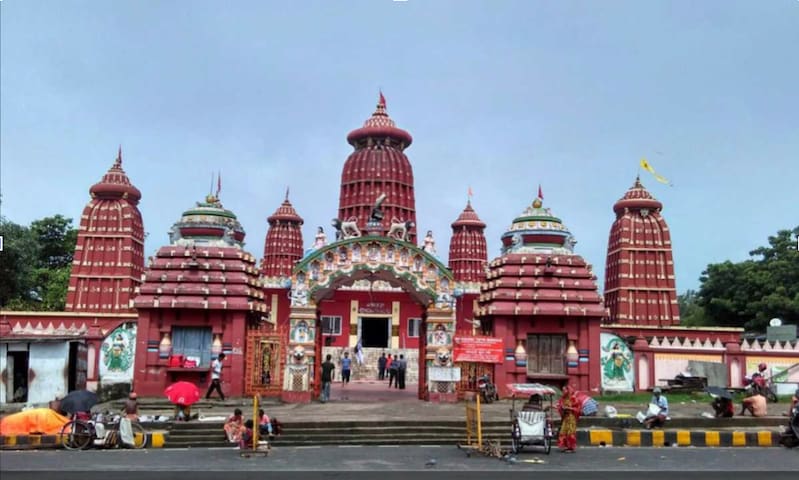Sightseeing
One Day Itinerary - Bhubaneswar Local sightseeing
The sanctum of the temple has no deity, indicating that people of any sect or religion are welcome to pray at the temple. Although, the carved figures of Lord Shiva and Goddess Parvati show some links to Shaivism. It is also believed that the Rajarani Temple served as the pioneer upon which the style of Central Indian architecture of temples was born.
Since Rajarani Temple is currently under the care of the Archaeological Survey of India, you will have to buy a ticket to enter the temple.
Đền Rajarani, Bhubaneswar
Tankapani RoadThe sanctum of the temple has no deity, indicating that people of any sect or religion are welcome to pray at the temple. Although, the carved figures of Lord Shiva and Goddess Parvati show some links to Shaivism. It is also believed that the Rajarani Temple served as the pioneer upon which the style of Central Indian architecture of temples was born.
Since Rajarani Temple is currently under the care of the Archaeological Survey of India, you will have to buy a ticket to enter the temple.
The temple is dedicated to Lord Shiva and lingams are worshipped here. The temple is decorated with sculptures of ascetics in meditative poses.
The pyramidal structure of the roof of the temple’s assembly hall is first of its kind. This style has been replicated in temples in and around Bhubaneswar. The temple exhibits brilliance in architecture through the construction of its sanctum, courtyards, and porches. The temple is said to have been built by Yayati I, the king of Somvanshi Dynasty
Đền Mukteswara
The temple is dedicated to Lord Shiva and lingams are worshipped here. The temple is decorated with sculptures of ascetics in meditative poses.
The pyramidal structure of the roof of the temple’s assembly hall is first of its kind. This style has been replicated in temples in and around Bhubaneswar. The temple exhibits brilliance in architecture through the construction of its sanctum, courtyards, and porches. The temple is said to have been built by Yayati I, the king of Somvanshi Dynasty
The temple was built by King Jajati Keshari in 7 century A.D. The presiding deity of the temple is Lord Shiva.
The sanctum of the temple has some of the most intricately designed stone vaults you will ever see. The Shiva Lingam inside the temple is 8 inches tall and 8 feet wide. The presence of images of Lord Vishnu in the temple offers a strong semblance of the Jagannath Sect of Hinduism. Every day, the temple offers twenty prayer services to its deities! The biggest celebration of the temple is Shivaratri when as many as 28,000 devotees visit to offer their prayers.
9 người dân địa phương đề xuất
Đền Lingaraja
Lingaraj Temple RoadThe temple was built by King Jajati Keshari in 7 century A.D. The presiding deity of the temple is Lord Shiva.
The sanctum of the temple has some of the most intricately designed stone vaults you will ever see. The Shiva Lingam inside the temple is 8 inches tall and 8 feet wide. The presence of images of Lord Vishnu in the temple offers a strong semblance of the Jagannath Sect of Hinduism. Every day, the temple offers twenty prayer services to its deities! The biggest celebration of the temple is Shivaratri when as many as 28,000 devotees visit to offer their prayers.
It is after the battle fought here at Dhauli that Ashoka realized the futility of war. It moved him to give up his worldly possessions and set out on the path of peace. Dhauli emerged as a major Buddhist center under Ashoka’s patronage. He built several chaityas, stupas, and pillars that depict the teachings of Lord Buddha.
7 người dân địa phương đề xuất
Chùa Dhauligiri Shanti Stupa
It is after the battle fought here at Dhauli that Ashoka realized the futility of war. It moved him to give up his worldly possessions and set out on the path of peace. Dhauli emerged as a major Buddhist center under Ashoka’s patronage. He built several chaityas, stupas, and pillars that depict the teachings of Lord Buddha.
The State Museum is a great way to understand the movement and evolution of the state through the centuries. The main attraction of the museum are manuscripts made of bamboo leaf, handcrafted paper, ivory, tree barks and palm leaves. You will also be shown ancient illustrated manuscripts.
Bảo tàng Nhà nước Odisha
Near Lewis RdThe State Museum is a great way to understand the movement and evolution of the state through the centuries. The main attraction of the museum are manuscripts made of bamboo leaf, handcrafted paper, ivory, tree barks and palm leaves. You will also be shown ancient illustrated manuscripts.
Nandankanan Zoological Park is located at a distance of 20 KM from Bhubaneswar and you will enjoy the beautiful journey in our private rental cabs. The zoo is situated amidst the dense green forests of Chandaka. Nandankanan Zoo was also the first captive gharial breeding center of India. The name Nandankanan means the “Garden of Pleasure” and is a great way to introduce children and even adults to the unique flora and fauna that our country has to offer.
The Nandankanan Zoological Park is also known as Nandankanan National Park. You may enjoy a variety of activities such as boating, white tiger and lion safaris, visit the reptile park, aerial ropeway and cable car when you are at the zoo.
6 người dân địa phương đề xuất
Vườn thú Nandankanan
Nandankanan Zoological Park is located at a distance of 20 KM from Bhubaneswar and you will enjoy the beautiful journey in our private rental cabs. The zoo is situated amidst the dense green forests of Chandaka. Nandankanan Zoo was also the first captive gharial breeding center of India. The name Nandankanan means the “Garden of Pleasure” and is a great way to introduce children and even adults to the unique flora and fauna that our country has to offer.
The Nandankanan Zoological Park is also known as Nandankanan National Park. You may enjoy a variety of activities such as boating, white tiger and lion safaris, visit the reptile park, aerial ropeway and cable car when you are at the zoo.
The two caves are situated on two adjacent hills, Udayagiri and Khandagiri.
There are also many beautifully carved caves that served as residential blocks for Jain monks who had visited King Kharavela during his rule. Udayagiri has eighteen caves while Khandagiri has fifteen. The most famous caves of Udayagiri are Hathigumpha and Ganesh Gumpha. Whereas, the most famous caves of Khandagiri are Rani ka Naur and Ananta cave. The beautiful artwork inside the caves gives us a glimpse of ancient art and how life was like before the advancement of machines and tools.
Khandagiri and Udayagiri Hills
The two caves are situated on two adjacent hills, Udayagiri and Khandagiri.
There are also many beautifully carved caves that served as residential blocks for Jain monks who had visited King Kharavela during his rule. Udayagiri has eighteen caves while Khandagiri has fifteen. The most famous caves of Udayagiri are Hathigumpha and Ganesh Gumpha. Whereas, the most famous caves of Khandagiri are Rani ka Naur and Ananta cave. The beautiful artwork inside the caves gives us a glimpse of ancient art and how life was like before the advancement of machines and tools.
The high rising spire of the main temple visible from many parts of the capital city, is its main attraction. Built and managed by a private trust, the temple complex also comprises shrines devoted to ochre-painted marble idols of Lord Hanuman, Lord Shiva and other gods.
Ram Mandir
The high rising spire of the main temple visible from many parts of the capital city, is its main attraction. Built and managed by a private trust, the temple complex also comprises shrines devoted to ochre-painted marble idols of Lord Hanuman, Lord Shiva and other gods.
It's built in a circular fashion, completely put together with blocks of sandstone. The inside of the circular wall has cavities, each housing the statue of a Goddess. There are around 56 such idols, made of black granite, inscribed within the wall cavities, centring on the main idol which is the Goddess Kali, who stands on a human head representing the triumph of the heart over the mind. The temple houses a central altar (Chandi Mandapa) which has the remaining 8 Goddess idols on all 4 sides. Some historians believe that an idol of Maha Bhairava was worshiped in the Chandi Mandapa.
Đền Chausathi Jogini
It's built in a circular fashion, completely put together with blocks of sandstone. The inside of the circular wall has cavities, each housing the statue of a Goddess. There are around 56 such idols, made of black granite, inscribed within the wall cavities, centring on the main idol which is the Goddess Kali, who stands on a human head representing the triumph of the heart over the mind. The temple houses a central altar (Chandi Mandapa) which has the remaining 8 Goddess idols on all 4 sides. Some historians believe that an idol of Maha Bhairava was worshiped in the Chandi Mandapa.

